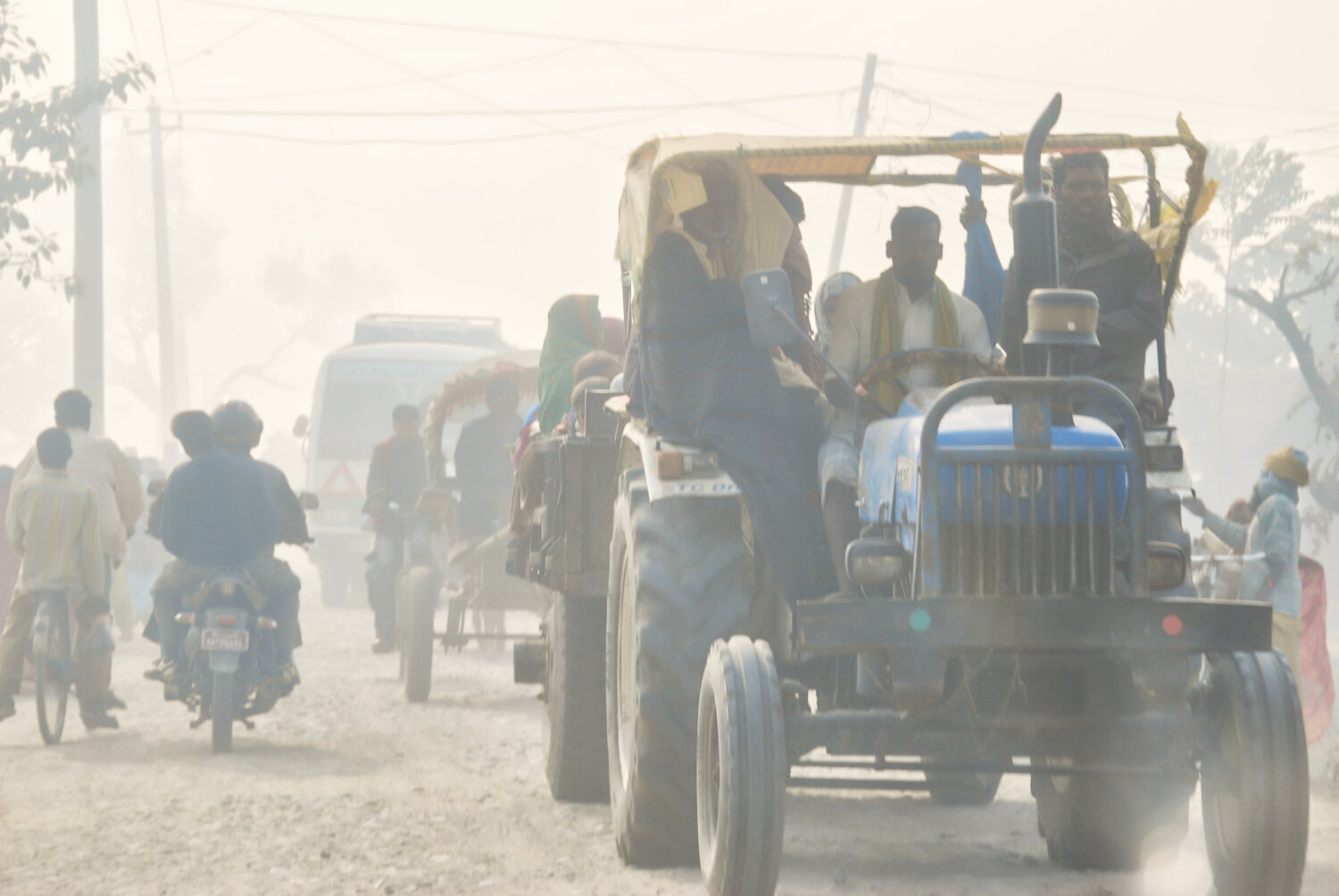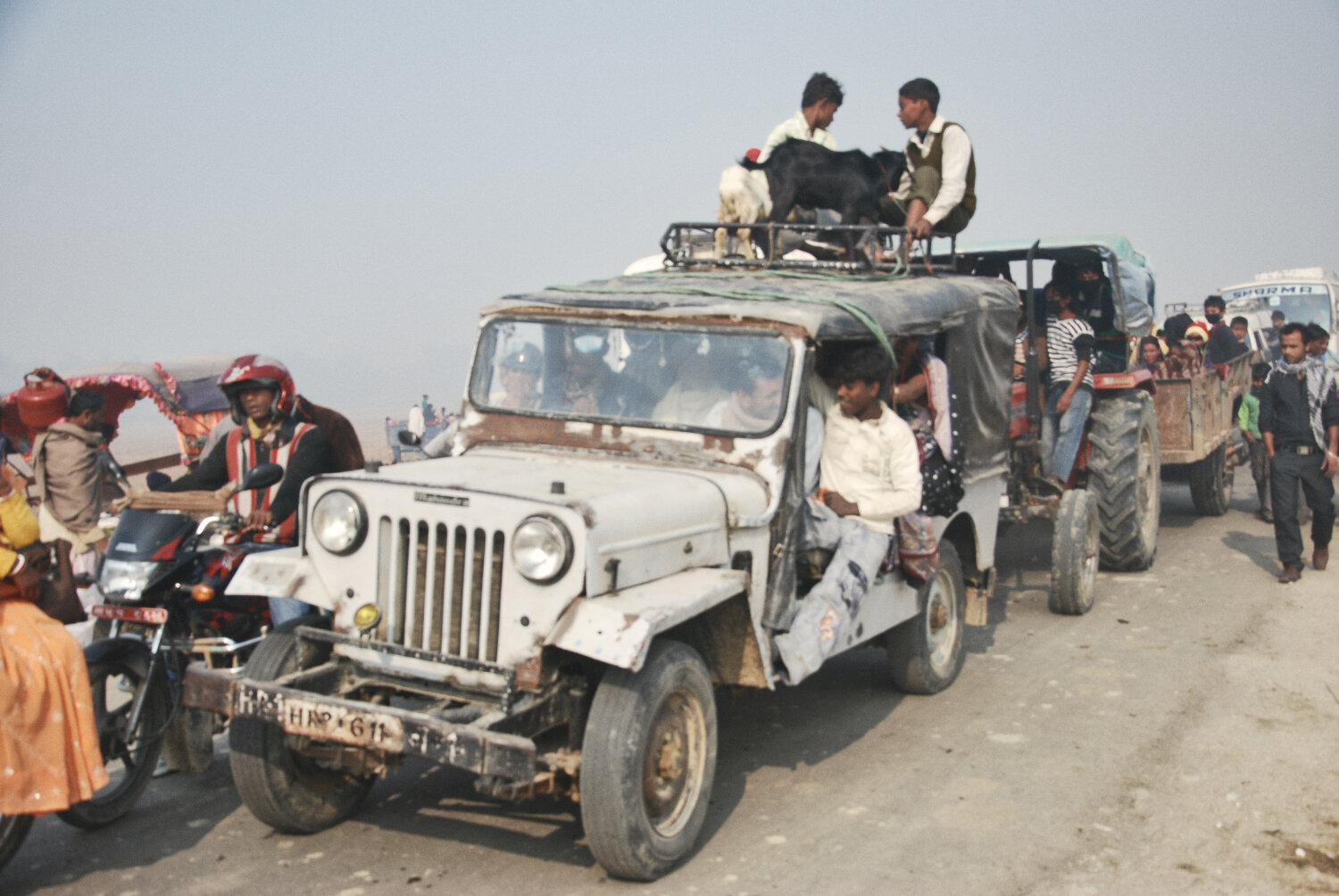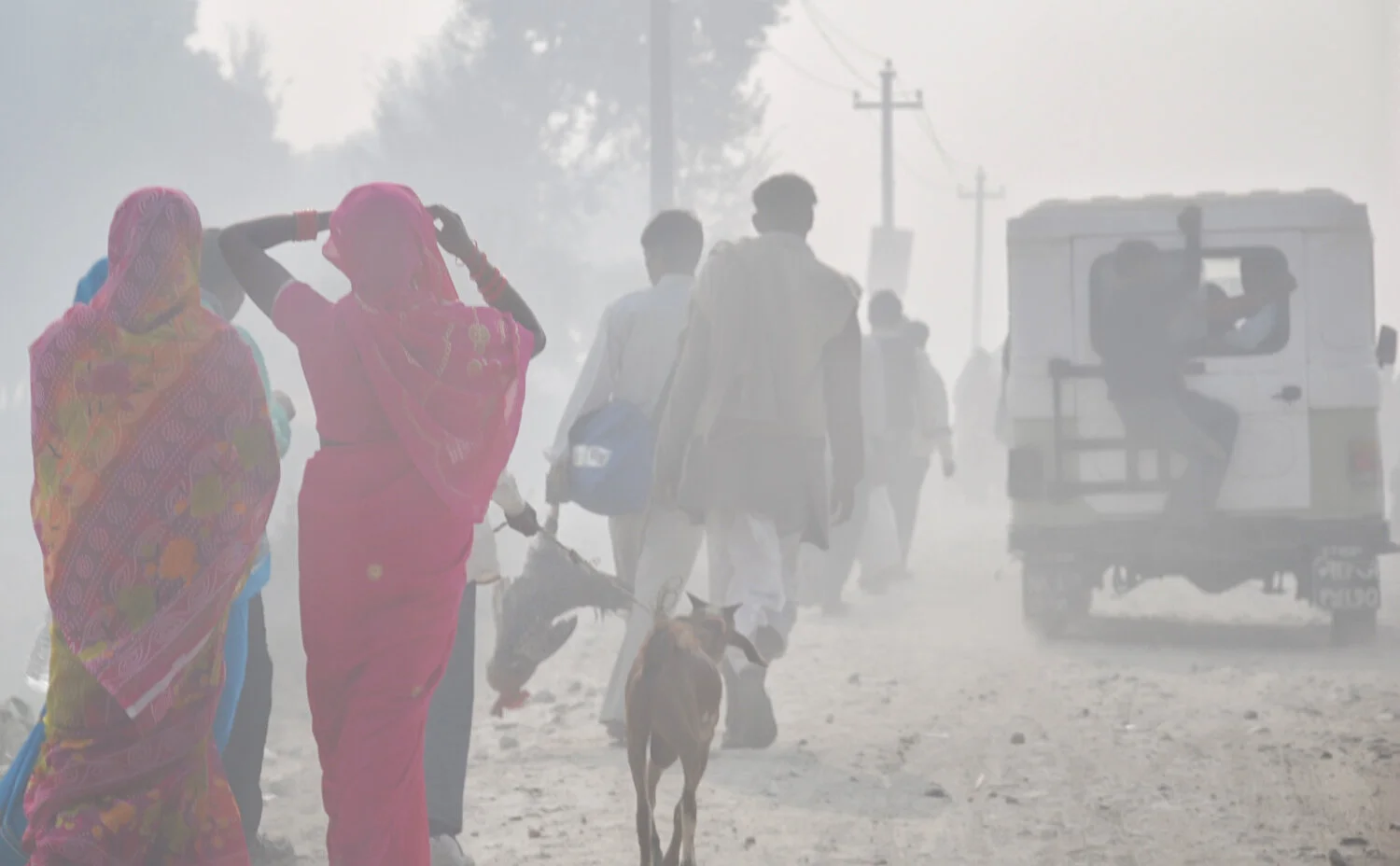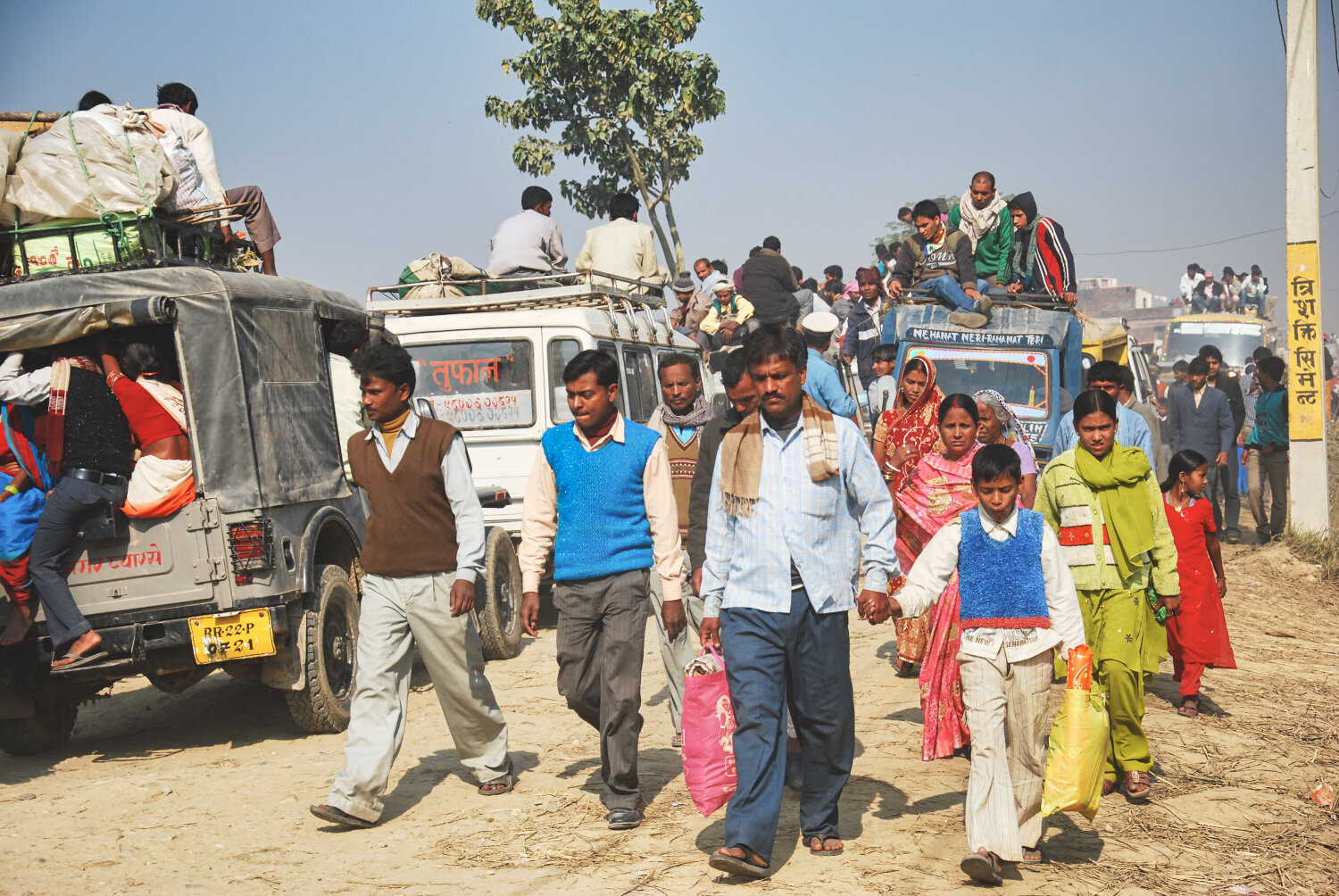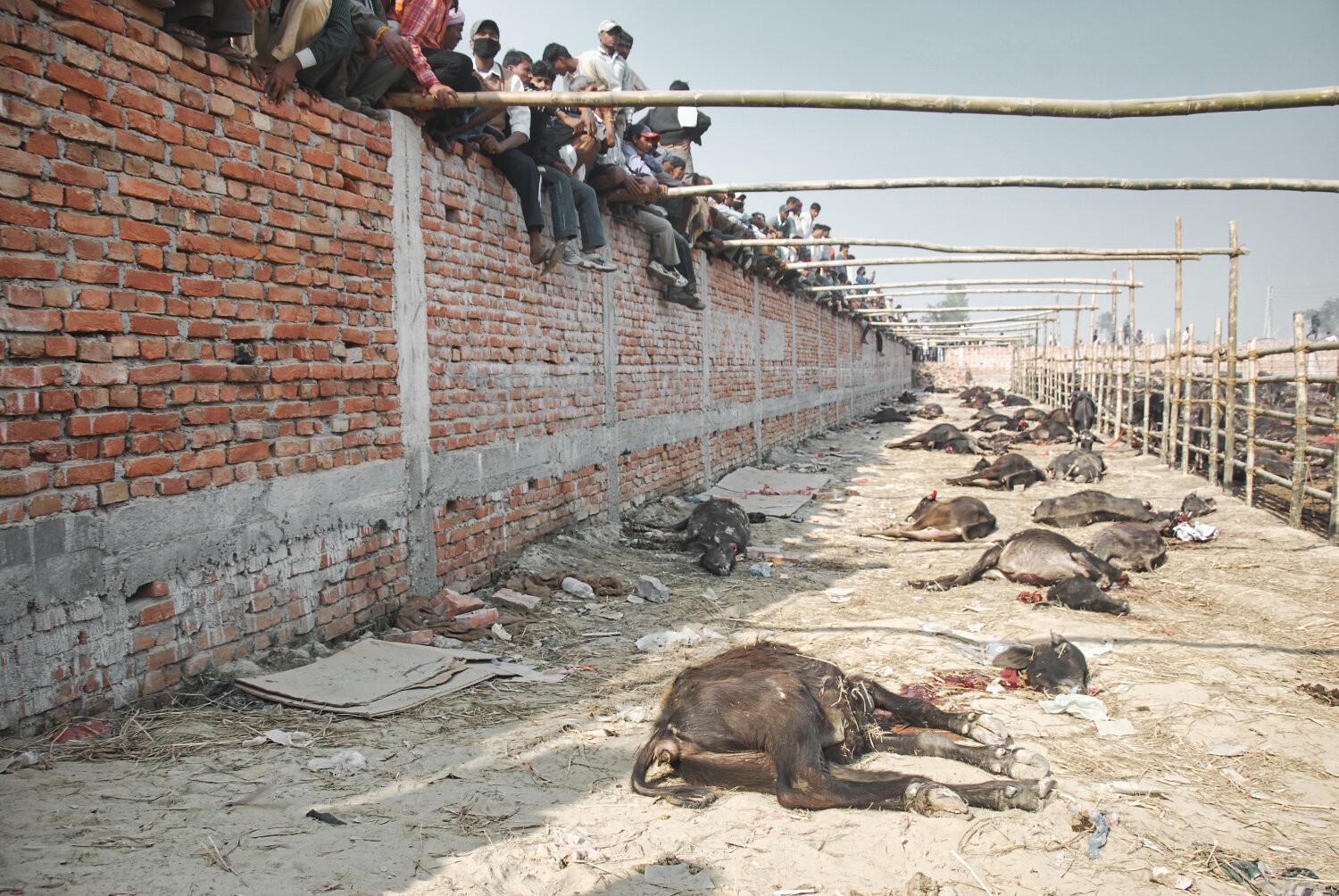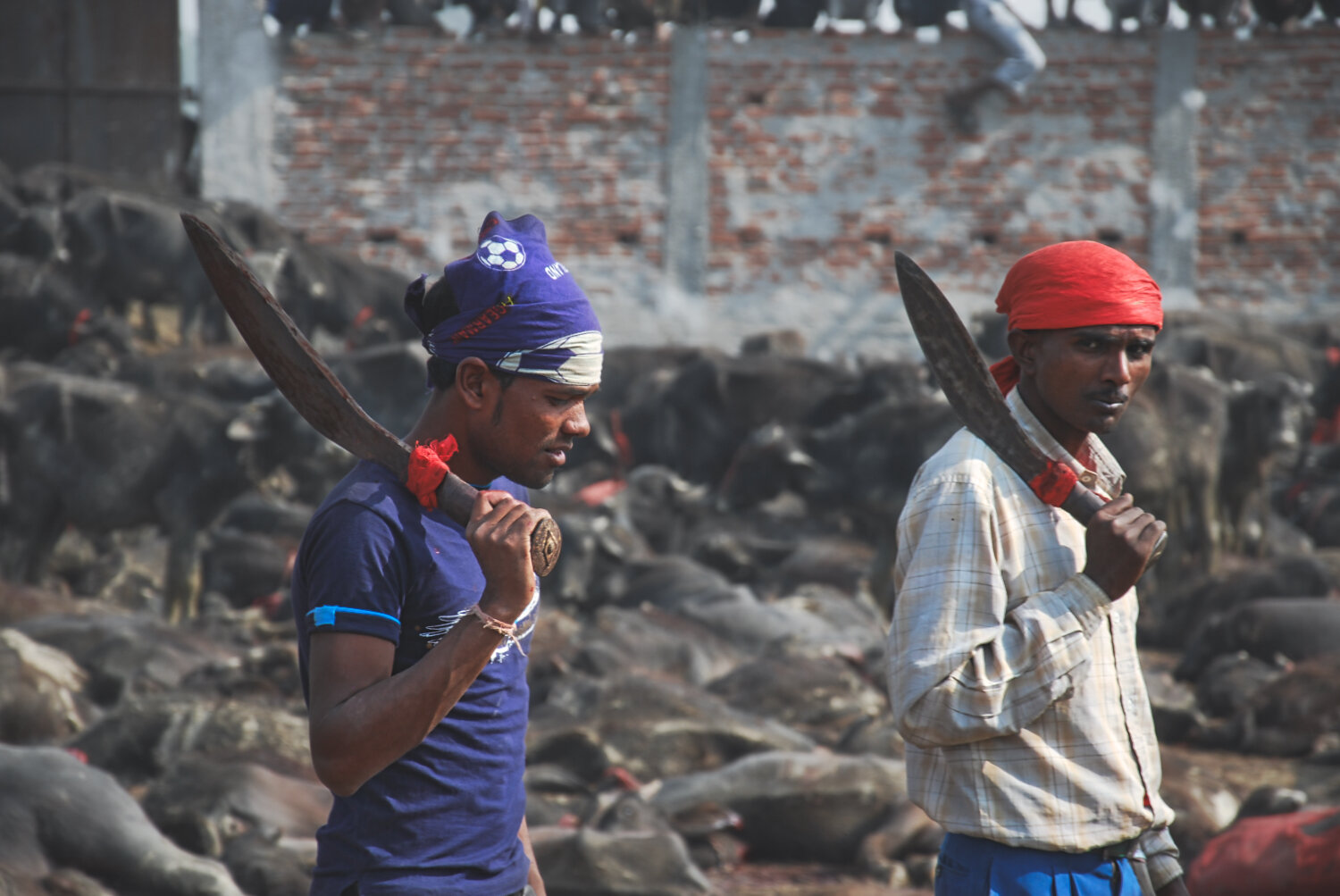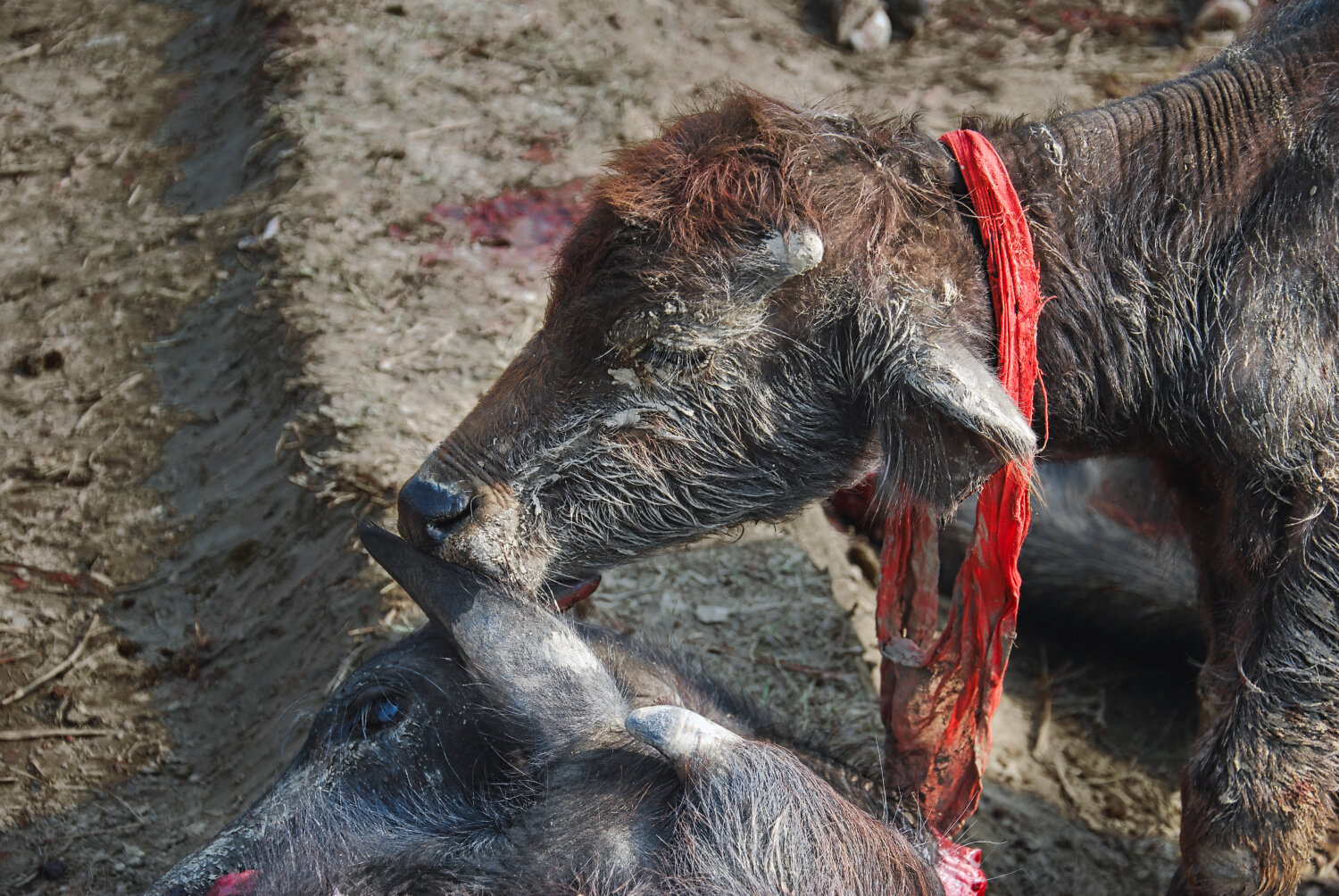97 - The Wrath of Gadhimai (Bariyarpur, Nepal)
LEGEND HAS IT, TWO HUNDRED SIXTY-FIVE YEARS AGO (give or take), a Nepalese farmer named Bhagwan Chaudhary had a dream. As with all legends and myths, the details get a little murky. Offer blood to Gadhimai and your problems will be solved, suffering vanquished. What did “offer blood” mean exactly? Some believe the goddess wanted blood a la human sacrifice. Supernatural beings have never been much for clarity. Was she requesting ritual murder or Bhagwan’s self-annihilation? The latter is a surefire way to vanquish personal suffering. He either convinced her a donation would suffice, cutting himself in five places for some blood-letting, or proposed a worthy substitute, or both. Whatever the case, animal sacrifice became the norm at the party in her honor. Chaudhary’s descendants have served in leadership positions at the Gadhimai temple ever since.
The Gadhimai Festival is held every five years in Bariyarpur, Nepal (approx. 160 km south of Kathmandu). Millions flock there to give the Hindu goddess of power her due. Facts and figures are as nebulous as the legend that spawned the festival.
Nobody knows how many animals died in 2009. I’ve read anywhere from 15,000 to 30,000 buffaloes and 300,000 to 500,000 birds, goats, rats, and sheep. I think someone pulled figures out of their hindquarters and passed them around like a baton. Consider the outcry from animal rights groups and the shock value attached to such high numbers. I’m not saying they’re wrong, only that there were ulterior motives to over and under-reporting. Either way, thousands were put down on November 24th and 25th of 2009.
Bad press is better than no press? Don’t think so. Slaughtering a couple hundred thousand animals in the name of religion is going to turn a few heads, along with more than a few stomachs.
I’ve read the numbers dropped drastically in 2014, but, again, sources are questionable at best. Organizers insisted only about 5,000 animals were sacrificed. Humane Society International (HSI) reported 30,000. BBC reported over 200,000. In 2015, Motilal Prasad (secretary of the Gadhimai Temple Trust) touted an indefinite ban on animal sacrifice. Ram Chandra Shah (temple chairman) said no such agreement had been made. Game on in 2019.
Honor the goddess, reap the benefits. More blood, more benefits. For millions of Hindus, it’s not theoretical. Appeasing Gadhimai brings prosperity and wards off evil. Sacrificial “lambs” ensure protection and compensate her for granted wishes, past or future. Denying her blood means forcing her to extract it in other ways, i.e. misery, misfortunate, and humanity’s undue suffering. She’ll get what is owed one way or another. Hindus place symbolic importance in the sacrifice, viewing the ceremonial act as a way of banishing their own animal instincts and neutralizing malignant self-interest. This isn’t the state fair but a deeply personal and eminently practical exercise of faith.
Stopping the slaughter would likely require martial law and lead to social unrest. And even if they “canceled” the festival by proclaiming temple grounds off-limits, it’s not illegal for private citizens to purchase and butcher their own livestock. This is why the numbers are so ambiguous. Besides the official proceedings, there’s also widespread BYOS (Bring Your Own Sacrifice). Instead of one large gathering, you’d have a thousand small gatherings spread over a wider area. Butcher a goat for Gadhimai? Illegal. Butcher the same goat for a wedding reception? Totally legit. Nepalese and Indian authorities attempted to curb the sale and transport of the soon-to-be-sacrificed, a fool’s errand. You’d have to ban sales completely for a set period to have an effect. How do you discriminate between legitimate livestock uses and proscribed ritual?
Before arriving in Nepal, I knew nothing of Gadhimai or the grisly rituals associated with the festival. Wherever I sojourned, I made a habit of keeping abreast of local news. The blurb I read online set my curiosity ablaze. Millions gathering for the largest mass animal sacrifice on earth? I couldn’t resist. The scant information on the internet only deepened the intrigue. Once in a lifetime and all that shit. I wasn’t alone. My prison/rafting crew was still around and game for adventures in ritual sacrifice.
The relatively short distance from Kathmandu belies the time it takes to reach Bariyarpur. I’d only learned of the festival the day before, so public transport was out. The system was likely to be overloaded, the experience hellish and inefficient. What to do? Pool resources for a rental car with driver, ya heard. We requested a late-night departure to avoid traffic delays and were informed leaving Kathmandu at 1:00 a.m. was no problem. Our chauffeur would retire early to be rested for the journey. Turns out he slept nary a wink. Super. Want a diatribe on the effects of sleep deprivation on motor skills? Of course not. Let’s just say it ain’t good. At least he wasn’t drunk… probably.
So we (the four musketeers and driver) packed ourselves into the “luxury” car provided. Luxury can be loosely defined as slightly more spacious than a clown car. Throw in two six-foot bastards, and you have something short of a pleasure cruise. Buying prescription drugs over the counter in the developing world is a risky endeavor (purity, quality, etc.), but Valium’s worth as a trip enhancer can’t be overstated, allowing one to sleep in unimaginable positions. It was like stuffing myself into a dryer and taking a nap.
Upon setting off, we were told there might be a problem and not to become angry if forced to walk the last 18 kilometers. Um, kay. Huge crowds, traffic congestion, and unfinished roads were proffered as possible snags. I wasn’t present when this caveat was passed along and didn’t discover the potential wrinkle until 12:30 a.m. Vereh nice, high five!
The journey was supposed to take about six hours, accurate if you flip the six upside down. A half-marathon wasn’t required as we were able to navigate the unpaved road leading to the temple. We did have an hour and a half walk from the parking area, but this was a far cry from the expected 18 kilometers. A vast expanse of rice fields surrounds the temple. On the approach, we joined caravans of buses, cars, tractors, motorcycles, bicycles, and bipeds as the devout streamed in and out. The flat terrain is a stark contrast to the mountainous northern regions and although the nights were cool, the days heat up even in fall and winter.
As we moved closer, we saw harbingers of what was to come. People conducted private ceremonies on either side of the path. Pilgrims carrying headless goats wasn’t an uncommon sight, nor were sporadic blood patches on the ground. Crowd density ballooned until it became a pushing match the whole way. The atmosphere was carnival-like, replete with lines of kiosks selling food and party supplies (clothing, jewelry, brightly colored dye powder, etc.).
We saw almost no western tourists, so a four-man band of white stuff attracted heavy scrutiny. Many young men approached and asked us where we were from. I welcomed the attention, but sleep deprivation, dust, heat, and crowd-splitting dampened my congeniality. We had no one to guide us and knew only we were headed toward the temple. It wasn’t long before I wondered if this little side trip was a mistake.
We couldn’t get anywhere near the temple as waves of people converged on the entrance. Curiously, the roof was covered in pigeons, one might say unnaturally so. We suspected they might sprinkle it with feed to draw them in. Although pigeons are also sacrificed, I believe these were wild stock, their arrival considered a propitious sign.
On opening day, the head priest kicks things off with a sacrificial rat, pig, pigeon, goat, and rooster before the main event. We’d been told the buffalo sacrifice was nearby and presumed a corresponding “field of blood,” so we continued our struggle through the masses. At one point, the crowd thinned, and we spotted a brick barrier up ahead. When we drew closer, we could see men besieging the eight-foot wall and police officers discouraging the behavior with wooden sticks, an act of pure futility. No sooner did a light rap on the noggin force one man down than another rose behind the officer.
I assumed a ceremony was unfolding, but my initial peek with a haphazard pull-up lunge revealed the truth—legions of dead buffalo scattered across a thousand square yards. The wall was one side of an enormous corral. Not quite processing what I’d just seen, I hoisted myself up and drank in the unimaginable scene—decapitated buffaloes by the ton. Tentative survivors roamed fecklessly between fallen comrades, huddled in a corner, or “hid” amongst the dearly departed in a hollow effort to avoid detection.
The slaughter begins at 9:00 a.m. and continues for hours. We arrived after 12:00 p.m, well into the process. From what I gather from online sources, 200–250 authorized “butchers” (their term, not mine) carry out the work. All are volunteers and the assignment is considered an honor. Preparations reportedly begin around 3:00 a.m. The tool of choice is the kukri, a large recurved blade similar to a machete. The kukri is the national weapon of Nepal and an all-purpose utility blade for millions across the subcontinent and Southeast Asia. If wielded properly, the head is severed in a single swipe. Nobody is perfect. A few extra swings and some light sawing are often required.
The process goes like this: A sacrifice is identified and held by tether while the kukri holder raises the blade skyward and brings it down in one fell swoop. Buffalo are docile creatures, but they still fidget and shift about inconveniently. Moving targets complicate matters, so there’s often a readjustment before lights out. By the time we arrived, volunteers were exhausted, which explains the surfeit of them and the tag-team strategy.
Words can’t adequately encapsulate the scene (at least not my words). Had I been brought up on a farm, I’m sure the impact would’ve been deadened somewhat. Still, the sheer scale and density of gore is probably not something most farmers would appreciate. Also, I’m not sure live decapitation would be SOP (Standard Operating Procedure) elsewhere in the world. Then again, throat-slashing unrestrained animals in the open could be a dangerous paroxysm of macabre chaos.
Detached buffalo heads took on a life of their own—eyes blinking, ears wiggling, jaws chomping. My initial reaction was an awkward laugh, more about disbelief and shock than humor. The police left us alone, making no attempt to dissuade us from our perch. In fact, they’d given up on prohibition efforts altogether. Complacency bred boldness. Alex wanted a closer look, so he jumped inside and began filming the aftermath. We followed suit.
Loitering on the wall was one thing, but foreign interlopers crashing the party? Surely a bridge too far in light of international outcry, no? And yet, nobody halted our advance. Why? I couldn’t say, though skin color might’ve provided an exalted status. When I realized they had no intention of stopping us, I forayed into the heart of the carnage. Battlefield Nepal. That’s my inept and ill-suited metaphor. The ground was littered with heads and bodies, painted/splattered with blood and spinal fluid. Undeniably gruesome yet inescapably fascinating—all this in Gadhimai’s name.
While capturing some ghastly images and trying to get a handle on the implications, I noticed the others speaking with a Nepali reporter. I walked over to see what was happening and, before long, found the camera pointed in my direction. He wondered what brought me there, to which I replied it all started with a cursory glance at the news online. And my impressions? Well, I said this was so unlike anything I've ever experienced, I wasn’t sure what to make of it. He passed along his card, told us to monitor the national news on television, and suggested we keep an open mind. We promised to do so and thanked him for his insights. (Our interview aired later that day. My response didn’t make the cut.)
WARNING - THE PICTURES AND VIDEO THAT FOLLOW ARE EXTREMELY GRAPHIC.
Animal sacrifice has been an integral part of all major religions for thousands of years. The foundational principles are the same across the board. Curry favor with god(s). Spare your peeps divine wrath. As far as the West is concerned, the practice is a barbaric anachronism banished to the dungeon of history, but no one can deny its ancient (i.e. biblical) roots. Condemn her followers, condemn our ancestors. Condemnation is easy. Understanding is not. Understand first, condemn second. It may lead to the same conclusion, but the process leaves room for empathy and compassion.
Leaving preconceptions aside, I tried to view it all in the eyes of the believer. Needless slaughter or essential ritual? What if you were raised from a tender age to believe satisfying Gadhimai’s blood thirst vital to the happiness of you and yours? And what if you’re merely releasing the spirit of the beast to a higher plane subject to the goddess’ protection? Is it really so “crazy” barbaric after all?
Though the heads are buried on temple grounds per tradition, meat is donated to the poor, the bones and hide sold at market… I think. Here again details are scarce, accounts conflicting. Donated. Sold. Misappropriated. I’m guessing there’s a bit of A, B, and C. The level of graft and corruption is up for debate. Cynics maintain it’s the capitalist fervor that keeps the festival alive, not hardcore belief. Greed disguised as religion? Well, that’s never happened before, right? Life is nuance. People hate nuance. This explains why dispassionate news articles are impossible to find. Consult a cultural anthropologist, Nepali historian, or an expert on Hindu traditions for context and subtlety? Follow the meat from sale to sacrifice to table? Interview a cross-section of attendees and participants? Not a fucking chance.
If you’re opposed to meat consumption, then what they do with corpses is irrelevant. But, if you’re not against the raising and harvesting of livestock in principle, then the judicious disposition of remains should mitigate some disgust, no? What if a million families gathered with their personal stock, butchered them in unison, and had the biggest communal barbecue on the planet? If buffaloes were killed in furtherance of dinner and not labeled a sacrifice, would this alter the perception? What if instead of a mass gathering, families culled livestock at home for a holiday meal (i.e. a private “sacrifice”)? What if they used the whole animal for food, clothing, or other household staples (soap, for example)?
What if they were culled and distributed as part of a legitimate business? Picture large-scale US operations where killing has become a model of efficiency, where hundreds of thousands, if not millions of animals are slaughtered every day. The conditions these creatures endure from cradle to grave is unconscionable by any standard. Industrial-scale mechanized butchering to feed a hungry nation, or an old-fashioned mass hand-slaughter to nourish a nation’s body and soul? Who’s more savage?
Mass animal sacrifice begins despite outcry from activists
By Swati Gupta, CNN
Updated 0219 GMT (1019 HKT) December 4, 2019
The Gadhimai festival, thought to be the largest mass-slaughter of animals on the planet, is underway in Nepal, despite fierce objections from animal rights groups…READ MORE
Nepal’s Animal-Sacrifice Festival Slays On. But Activists Are Having an Effect.
By Bhadra Sharma - Dec. 6, 2019
With officials cracking down, the number of animals slaughtered during the Gadhimai festival has dropped sharply over the years…READ MORE








